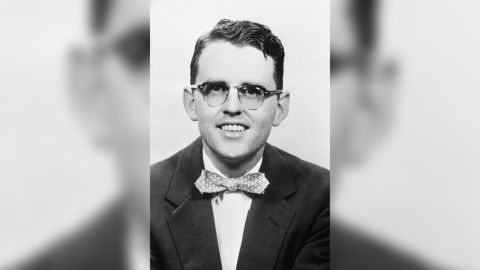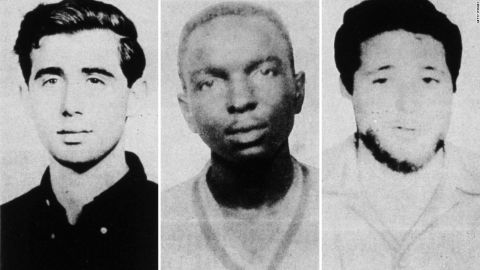CNN
—
Sen. Raphael Warnock’s re-election is being celebrated by supporters across the nation with many political observers crediting the work of voting rights groups for the consequential win.
Warnock delivered a victory speech to a fiery crowd in Atlanta on Tuesday night that touched on the power of faith, his deep Georgia roots and the perseverance of voters in the face of Republican-led voter suppression efforts. Election officials said a record number of voters showed up for early voting last week. And Black voters have been largely credited for Warnock’s win, signaling that Georgia is no longer a reliably red state.
In his speech, Warnock also honored the Black and White unsung heroes of the civil rights movement who died fighting for equal voting rights, making wins like his possible.
“Tonight, I want to pay tribute to all those, over so many years, who have put their voices, and their lives on the line, to defend that right,” Warnock said. “Martyrs of the movement like (Michael) Schwerner, (James) Chaney and (Andrew) Goodman, Viola Luizzo, James Reeb. And those who stood up and spoke up like Fannie Lou Hamer. John Lewis, who walked across a bridge knowing that there were police waiting to brutalize him on the other side. Yet, by some stroke of destiny mingled with human determination he walked across that bridge in order to build a bridge to a more just future.”
While Hamer and Lewis have been widely discussed by historians and journalists, Schwerner, Chaney, Goodman, Luizzo and Reeb are lesser known. But that doesn’t negate the significance of their work toward equality. All of them were killed by white supremacists or Ku Klux Klan members.
Here is what you should know about five “martyrs” of the movement:
Liuzzo was a 39-year-old wife and mother of five of from Detroit who was killed by Ku Klux Klansmen in Selma on March 25, 1965.
Historical records show Liuzzo, a White woman, had been committed to fighting for economic justice and civil rights.
She was an active member of the Detroit NAACP chapter and the First Unitarian Universalist Church of Detroit. Family members say she decided to travel to Selma in 1965 after seeing televised news reports of peaceful protesters being beaten and tear-gassed by police on the Edmund Pettus Bridge.
In Selma, Liuzzo marched and helped transport demonstrators in her car. She was ambushed and shot to death by KKK members while driving Leroy Moton, a Black man, to Montgomery. Within 24 hours of Liuzzo’s death, President Lyndon Johnson announced the arrests of the KKK members. They were all acquitted by Alabama courts, however a federal grand jury found them guilty of violating Liuzzo’s civil rights and they were sentenced to 10 years in prison.
In 1991, a marker honoring Liuzzo was erected at the site where she was killed on U.S. Highway 80, about 20 miles east of Selma

Reeb, a White Unitarian minister who lived in Boston, died after traveling to Selma, Alabama, in 1965 to answer Martin Luther King Jr’s call to clergy to join demonstrations for voting rights in the aftermath of “Bloody Sunday.”
The 38-year-old minister was beaten by a group of White men on March 9, 1965 as he and two other White clergymen left an integrated Selma restaurant after having dinner. He was hit in the head and died two days later at a Birmingham hospital.
His killing gained nationwide attention, prompted vigils in his honor and is believed to have contributed to the passage of the Voting Rights Act of 1965.
“The world is aroused over the murder of James Reeb. For he symbolizes the forces of goodwill in our nation. He demonstrated the conscience of the nation. He was an attorney for the defense of the innocent in the court of world opinion. He was a witness to the truth that men of different races and classes might live, eat, and work together as brothers,” King said as he delivered a eulogy for Reeb in 1965.
Three White men were indicted with murder in Reeb’s killing but their cases resulted in acquittals.

Chaney, Goodman and Schwerner were three civil rights workers murdered in Mississippi during the summer of 1964. The killings were among the most notorious of the civil rights era, and were the subject of the 1988 movie “Mississippi Burning.”
The three men, who registered African Americans to vote, had just visited the victims of the burning of a Black church in Neshoba County when a sheriff’s deputy took them into custody for speeding. The men were driving a car with license plates registered to the Congress of Federated Organizations (COFO), one of the most active civil rights groups in Mississippi, according to an FBI file on the case.
After their release from the county jail, a Ku Klux Klan mob tailed their car, forced it off the road and shot them to death. Their bodies were found 44 days later, buried in an earthen dam, after an extensive FBI investigation.
Chaney was a 21-year-old Black volunteer with COFO. Goodman, a White 20-year-old, was a college student and new volunteer from New York. Schwerner, a White 24-year-old former social worker, was an established civil rights organizer who was “particularly reviled by the Klan for his work,” according to the FBI file.
The killings fueled the passage of the Civil Rights Act in 1964 and the Voting Rights Act the next year.
In 1967, prosecutors convicted eight defendants for violating the federal criminal civil rights conspiracy statute, namely the victims’ right to live. None served more than six years in prison.
No murder charges were filed at the time but nearly 40 years later, Edgar Ray Killen, a part-time Baptist minister and the plot leader, was found guilty of manslaughter in 2005 and sentenced to three consecutive 20-year sentences. Killen died in 2018.